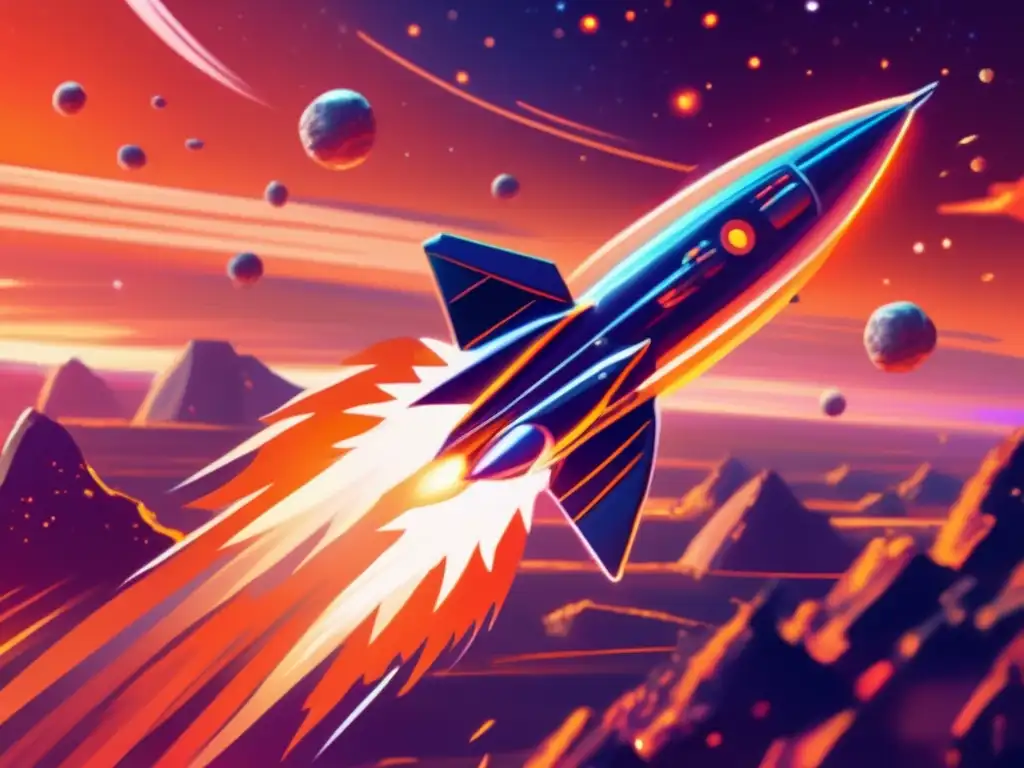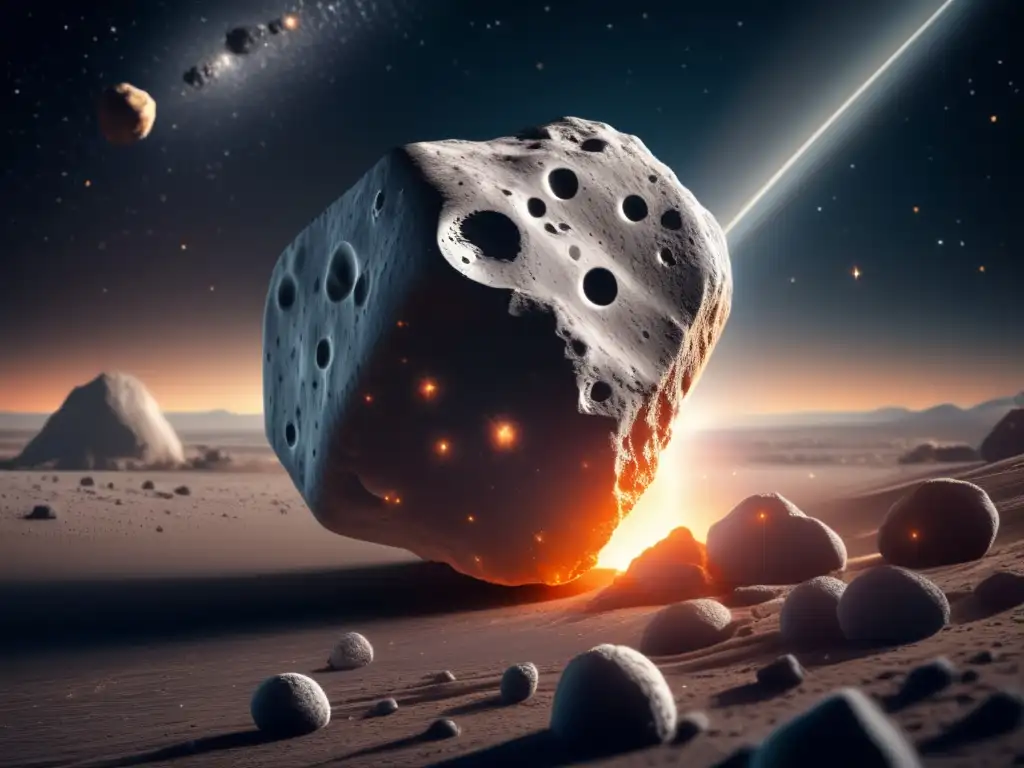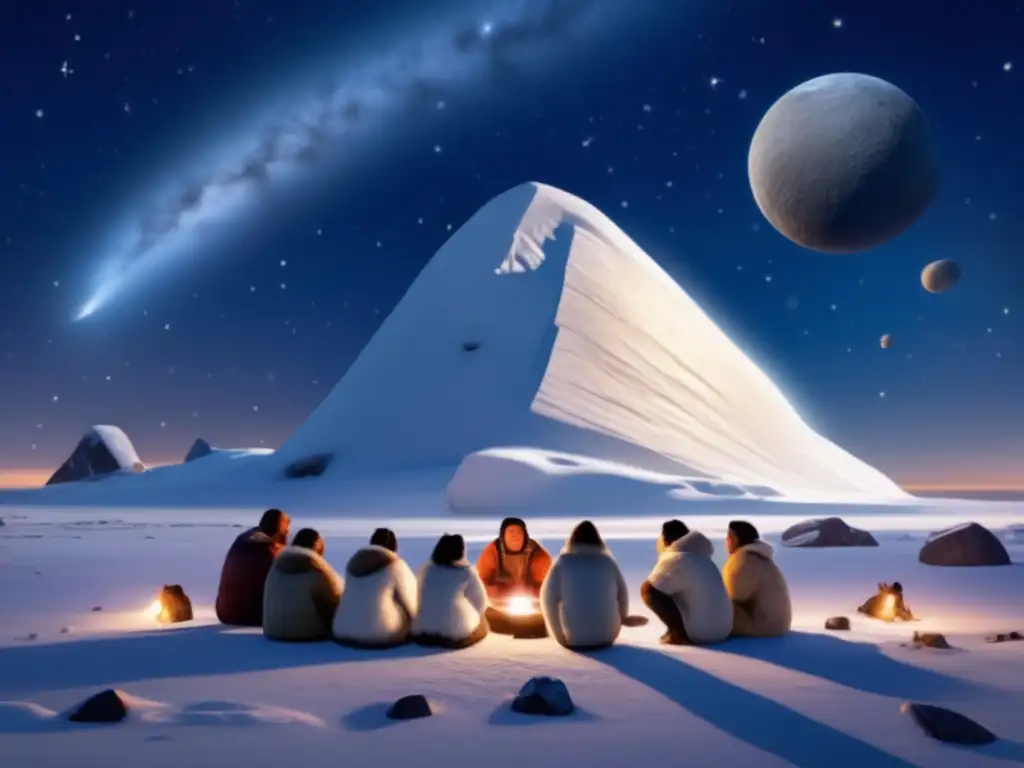Sky Rocks: The Asteroids Of Ancient Inuit Legends

Introduction
Asteroids have been a part of human mythology and cultural beliefs for centuries, with various civilizations attributing different meanings and significance to these celestial objects. The Inuit people, native to the Arctic regions of Canada, Alaska, and Greenland, have their own legends featuring asteroids, which they call "sky rocks". In this article, we will explore the asteroids of ancient Inuit legends and how they relate to modern scientific discoveries.
The Inuit People and Their Sky Rock Legends

The Creation of the World
According to Inuit legend, the world was created by the sea goddess Sedna, who lived at the bottom of the ocean. In one version of the story, Sedna was thrown into the sea by her father and transformed into a powerful goddess. She then created animals, plants, and humans from pieces of her own body. In another version, Sedna's fingers were cut off and became the first humans and animals, while her hair became the grass and trees.
The Role of Sky Rocks
Inuit legends also include stories about the origins of the sky and the stars. According to one legend, the sky was created when a great hunter shot an arrow into the sky, creating a hole through which light could shine. Another legend tells of the moon being created when Sedna's son threw a hammer at the sky, accidentally hitting the moon and breaking it into pieces that became the stars. Sky rocks were seen as powerful entities that could grant wishes and bring good luck, but also cause destruction and chaos if angered.
The Scientific Significance of Asteroids

Asteroids as Remnants of the Solar System's Formation
Asteroids are rocky remnants from the early days of the solar system, formed around 4.6 billion years ago from the same material that created the planets. Studying asteroids can provide insight into the conditions and processes that formed the solar system, as well as clues about the origins of life on Earth.
Asteroids as Potential Threats to Earth
While most asteroids pose no threat to Earth, some can potentially collide with our planet and cause significant damage. The Chicxulub impact event, believed to have caused the extinction of the dinosaurs, was caused by an asteroid 10 to 15 kilometers in diameter. NASA and other space agencies are constantly monitoring asteroids that come close to Earth or have the potential to hit us in the future.
The Intersection of Inuit Legends and Modern Astronomy

The Mysterious Tunguska Event
On June 30, 1908, a massive explosion occurred in the sky over the Tunguska region of Siberia, Russia. The explosion flattened trees and caused a shockwave felt hundreds of kilometers away, but no impact crater was found. The cause of the event is still debated, with theories ranging from a comet to a black hole. However, recent studies suggest that the culprit may have been an asteroid that exploded in the atmosphere before reaching the ground. This event bears striking similarities to Inuit legends of sky rocks causing destruction in the world.
The Naming of Asteroids
Asteroids are named after various mythological figures, including gods and goddesses from Greek, Roman, and Norse mythology. In 1991, asteroid 5107 was named "Sedna" after the Inuit goddess who created the world. Sedna is a trans-Neptunian object, located in the Kuiper Belt beyond Pluto. Its discovery played a role in the reclassification of Pluto as a dwarf planet.
Frequently Asked Questions

-
What are asteroids?
Asteroids are rocky objects that orbit the sun and are smaller than planets. They are remnants from the early days of the solar system.
-
Why are asteroids important to study?
Studying asteroids can provide insight into the origins and formation of the solar system, as well as potential threats to Earth from asteroid impacts.
-
What are some famous asteroids?
Some famous asteroids include Ceres, Vesta, Eros, and Apophis.
-
Can asteroids collide with Earth?
Yes, some asteroids can potentially collide with Earth and cause significant damage. However, the likelihood of such an event occurring is low.
-
What is the Tunguska event?
The Tunguska event was a massive explosion that occurred in the sky over Siberia in 1908. The cause of the event is still debated, but recent studies suggest it may have been caused by an asteroid exploding in the atmosphere before reaching the ground.
Conclusion
Asteroids have played a significant role in human mythology and cultural beliefs, including the legends of the Inuit people and their "sky rocks". While these legends may not be scientifically accurate, they show the fascination and awe that asteroids have inspired throughout history. Today, we continue to study asteroids in order to gain a deeper understanding of our solar system's origins and potential threats to Earth. By studying and exploring these fascinating celestial objects, we can continue to expand our knowledge and understanding of the universe.
Thank you for reading this article on Asteroid Realm. We encourage you to share your thoughts and questions in the comments section below, as well as to subscribe and engage with our community. For more information on asteroids, please visit our Additional Resources section.
Additional Resources

- NASA Asteroid Watch - https://www.jpl.nasa.gov/asteroidwatch/
- NASA Planetary Defense - https://www.nasa.gov/planetarydefense
- The Minor Planet Center - https://minorplanetcenter.net/
 Asteroids In The Legends Of The Great Plains Tribes
Asteroids In The Legends Of The Great Plains Tribes Asteroids And Oracles: Prophetic Asteroids In Ancient Greece
Asteroids And Oracles: Prophetic Asteroids In Ancient Greece Fire From The Heavens: Asteroids In New Zealand Maori Myths
Fire From The Heavens: Asteroids In New Zealand Maori MythsIf you want to discover more articles similar to Sky Rocks: The Asteroids Of Ancient Inuit Legends, you can visit the Asteroid Mythology category.
Leave a Reply

Articulos relacionados: